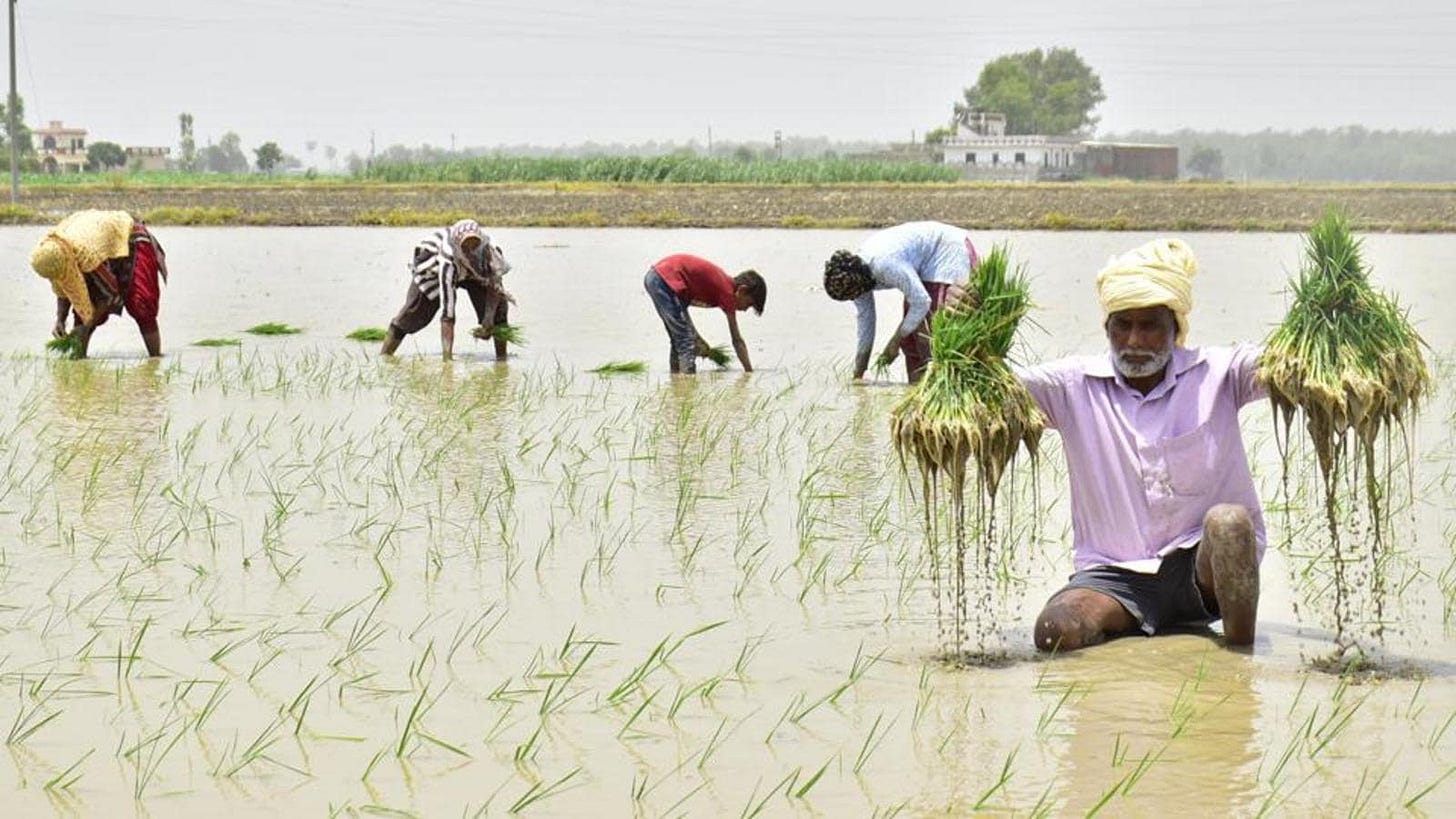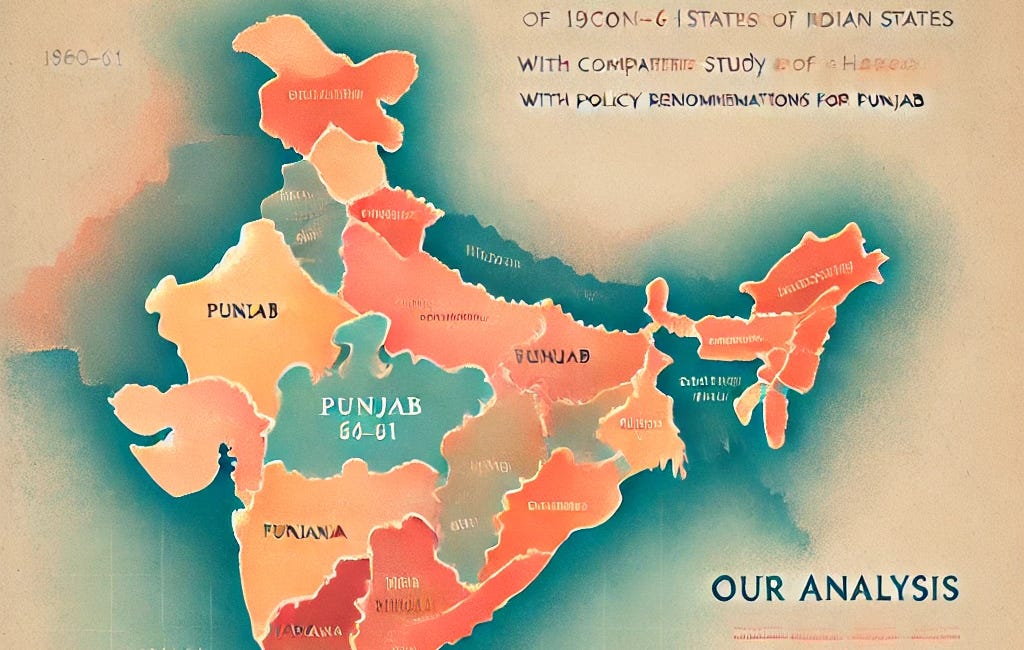Punjab’s Draft Agriculture Policy: A Step Towards Sustainability and the Challenges Ahead
Constructive suggestions, ongoing dialogue, and continuous adaptation will be essential as Punjab works towards building a more resilient and sustainable agricultural future.
Punjab’s Draft Agriculture Policy:
Source: Editorial and news coverage from "The Tribune"
Punjab's draft Agriculture Policy, as highlighted in the editorial and news coverage by The Tribune, represents a bold and timely initiative aimed at addressing the state's pressing environmental and economic challenges in agriculture. Though the policy has yet to be publicly released, having been circulated only to key stakeholders on Monday (September 16), The Tribune's coverage has triggered discussions around its focus on critical issues such as groundwater depletion, crop diversification, and environmental sustainability. The policy’s emphasis on banning long-duration paddy varieties and promoting alternative crops signifies a significant shift in how Punjab intends to manage its agricultural resources. While these proposals are commendable, their success will depend on careful planning, adequate financial backing, and effective implementation. Constructive suggestions and strategic refinement will be vital to ensuring the policy— which, we recommend, should be made publicly available— achieves its ambitious goals.
Groundwater Preservation and Crop Diversification
The cornerstone of the draft policy is the recommendation to ban long-duration paddy varieties in 15 “dark blocks,” areas where groundwater extraction has reached critical levels. This move is essential given that Punjab’s water-table is depleting at an alarming rate, with paddy cultivation being a primary contributor. The state's over-reliance on water-intensive crops like paddy is no longer sustainable, and the policy’s recognition of this issue is both timely and necessary.
However, while the emphasis on crop diversification—shifting from paddy to crops like cotton, maize, sugarcane, and vegetables—is a sound strategy for long-term sustainability, it will not be easy to implement. Punjab’s farmers have historically relied on paddy due to assured procurement and minimum support prices (MSP) as the preferred kharif crop. Convincing them to adopt new crops without a guaranteed market or similar financial assurances is a significant challenge that the policy must address comprehensively.
Economic Viability and Farmer Compensation
The draft policy proposes compensating, or at least guaranteeing compensation to, farmers who transition to alternative crops, which is crucial for ensuring their financial security during this period of change. However, the absence of a clear funding allocation plan raises legitimate concerns. How will the government finance this compensation scheme, and will the support be sufficient to cover the potential losses farmers might face when shifting from paddy to less water-intensive crops?
Without a solid financial framework, the policy risks faltering, much like previous agricultural reforms in Punjab. A successful transition will require not only compensation but also incentives that provide long-term economic benefits to farmers. Moreover, the government must ensure that farmers who diversify are not financially disincentivised. Legal mechanisms guaranteeing MSP for alternative crops should not only be enshrined in the policy to reassure farmers but also backed by robust financial guarantees. On Tuesday (September 17), several farmers' bodies in Punjab expressed scepticism about the implementation of key recommendations made by the agriculture policy formulation committee, including the introduction of a state-specific insurance policy and ensuring MSP with assured procurement of all crops, citing concerns about the state's precarious fiscal position.
Legal and Enforcement Mechanisms
The draft policy’s lack of legal enforcement mechanisms is another area of concern. Recommendations like banning specific paddy varieties are likely to meet resistance from the powerful farmer unions, especially if farmers feel their livelihoods are under threat. The state will need to implement legal provisions to ensure compliance with the policy’s recommendations.
Moreover, the absence of clear enforcement structures could hinder the policy’s long-term effectiveness. If the government fails to outline how it will ensure adherence to the new regulations, especially in areas with high groundwater depletion, it risks creating a policy that is strong in theory but weak in practice.
Infrastructure and Market Development
For crop diversification to succeed, the state must also develop the necessary infrastructure and markets to support new agricultural practices. Alternative crops like cotton, maize, and vegetables require a different set of logistics, from storage and transportation to processing and marketing. The policy does not appear to adequately address these critical needs.
Without proper infrastructure, farmers will have little incentive to diversify their crops. Additionally, markets for these alternative crops must be robust, with reliable procurement systems in place. The government must work to establish these systems before expecting farmers to move away from paddy on a large scale. This will require collaboration between both the state and central governments to create a conducive environment for diversified agriculture. In addition, it is essential to bring private players on board, whether they are procurement brokers, traders, or agri-processing units.
By fostering public-private partnerships, the policy can ensure a more seamless transition for farmers and build a stronger market for alternative crops. This collaborative approach will also help develop the necessary infrastructure and supply chains to support diversified agriculture in Punjab.
Environmental Urgency vs. Implementation Pace
While the draft policy highlights the urgent need to tackle environmental issues, including the groundwater crisis, it suggests a gradual approach to implementation. Given the severity of the groundwater crisis, this gradual transition may not be swift enough to prevent further ecological degradation, which is merely an euphemism for desertification. Punjab’s environment is at a tipping point, and incremental steps may fall short of what is necessary to reverse the damage caused by decades of water-intensive farming.
The policy would benefit from a more aggressive timeline, with immediate action plans for the most critical areas. Quick wins, such as incentives for adopting micro-irrigation techniques or introducing drought-resistant crops, could help ease the transition and show immediate benefits to farmers and the environment alike.
Coordination with Central Government
The role of the central government in Punjab’s agricultural reforms is critical, particularly in expanding the MSP regime to include crops beyond wheat and paddy. However, the policy’s reliance on central support remains vague. Punjab has long urged that the MSP be extended to cover a wider range of crops, but without a clear commitment from the Centre, the policy risks leaving farmers without the financial safety net they currently enjoy with paddy. Additionally, the overarching demand from farmers to place the MSP on a statutory footing remains an unresolved issue.
The central government’s reluctance to broaden the MSP regime, coupled with the limited scope of current agricultural subsidies, continues to hinder Punjab’s ability to diversify its agricultural economy. For the policy to succeed, the Punjab Government must engage proactively with the Centre to secure the necessary financial and policy backing.
Balancing Food Security and Environmental Concerns
A key challenge of the draft policy is balancing the need for environmental sustainability with the country’s food security requirements. Paddy was initially promoted in Punjab to ensure food security for the nation, and any shift away from this crop must not jeopardise national grain reserves. The draft policy’s shift in focus from paddy to alternative crops is necessary for environmental reasons, but it will need to consider the broader implications on India’s food security.
Punjab’s contribution to the national food basket is invaluable, and while diversification is essential, the policy must ensure that the state continues to play its critical role in feeding the country. A well-planned, phased transition, with sufficient support from both state and central governments, is key to maintaining this balance.
Basmati as an Alternative
One promising alternative to water-intensive paddy is Basmati rice, which consumes significantly less water and could serve as a viable substitute. However, it is important to note that Basmati is almost exclusively grown for export and does not contribute to the Public Distribution System (PDS) under the Government of India's food security programme. This creates a challenge in terms of aligning crop diversification with national food security needs. While promoting Basmati could help reduce water usage, the policy must also consider how to integrate such crops into domestic food supply channels or ensure adequate production of other staple grains for PDS1.
Summing Up: A Step Forward with Caution
The draft Agriculture Policy of Punjab is undoubtedly a positive and necessary initiative. It seeks to address the state’s pressing environmental concerns, encourages sustainability through crop diversification, and acknowledges the economic needs of its farmers. However, several critical aspects of the policy still require greater clarity and depth for successful implementation.
a.) Addressing Potential Roadblocks
Without clear funding mechanisms, strong legal enforcement, and the development of adequate market infrastructure, the policy risks encountering significant challenges. Additionally, the gradual pace of implementation may fall short in addressing the state's urgent groundwater crisis. More aggressive and immediate actions, combined with stronger coordination between the state and central government, are essential for securing the financial support needed and expanding MSP coverage to more crops.
b.) Clarifying the Role of the Private Sector
The role of the private sector in Punjab’s agricultural landscape must be carefully and clearly outlined in the policy. This should be done in close consultation with the farmers. Without transparent and well-defined provisions, there is a real risk that vague or unexplained clauses could lead to unrest, similar to what was witnessed during the protest against the now-repealed three farm laws. Those laws, which sparked one of the largest farmers’ movements in recent history, were perceived by many as a way for the central government to shift its responsibilities onto private players. To avoid repeating such a scenario, the draft policy must explicitly clarify how private sector actors—whether in procurement, agri-processing, or trade—will be integrated into the system while ensuring that the interests of farmers are fully safeguarded. Clear communication and consultation will be key to maintaining trust and avoiding controversy.
c.) The Path Ahead: Balancing Sustainability and Economic Security
Punjab stands at a critical crossroads. The future of its agriculture depends on a comprehensive strategy that balances environmental sustainability with economic security for its farmers2. While the draft policy lays a promising foundation, its ultimate success will depend on the state’s ability to fine-tune its proposals, secure necessary funding, and foster trust among the farming community. Constructive suggestions, ongoing dialogue, and continuous adaptation will be essential as Punjab works towards building a more resilient and sustainable agricultural future.
India Scraps Minimum Export Price for Basmati Rice to Boost Global Competitiveness
Government Removes the Minimum Export Price (MEP) for Basmati Exports
Punjab vs Haryana: A Comparative Analysis of GDP Growth
Introduction to the Working Paper of PM’s Economic Advisory Council







